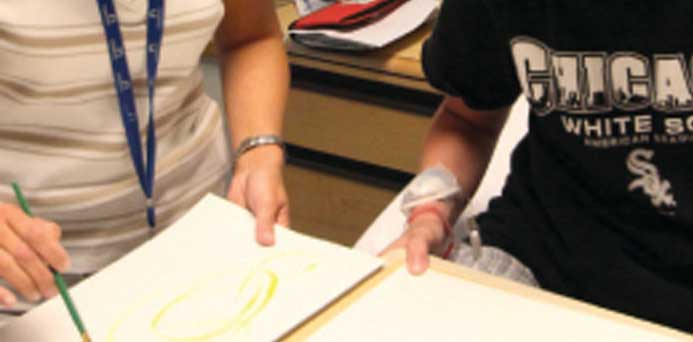When words can’t describe the pain or fear, try painting a picture. Art therapy helps patients and victims of all ages show their true feelings.
“Art therapy is based on the premise that we think in images, although most communication is in words,” says Dr. Harriet Wadeson, head of the Art Therapy Certificate Program at Northwestern University’s School of Continuing Studies and author of “Art Psychotherapy.” “It gives people another way to express themselves.”
The act of creating can reveal insight, release tension and aggression, build self-esteem and promote personal interactions. It is used in hospitals, shelters, schools, clinics and even prisons.
Here are two wonderful art therapy programs in the Chicago area:
Hilgos Foundation
Several students from the School of the Art Institute of Chicago are awarded funding each year to encourage artistic creation by elderly people, especially those with memory loss or dementia.
The foundation was established by Highland Park resident Berna Huebner in memory of her mother, Hilda Gorenstein. Painting helped her mother, a 1920s SAIC student and renowned artist known as Hilgos, regain communication skills lost to Alzheimer’s disease.
“Art therapy helps people with memory problems rediscover their former selves and have a better quality of life,” Huebner says.
This year’s projects include autobiographical bookmaking by patients with dementia at Lieberman Geriatric Health Center in Skokie and a collage workshop for residents at Resurrection Retirement Community in Chicago. Other projects helped seniors document their lives through video, shadowboxes and writing.
Children’s Memorial Hospital
Resident art therapist H. Willow Troy works with children with blood disorders and cancer. They are inpatient and outpatient, chronic, acute and terminal. Art therapy is part of the holistic approach to their care.
Troy helps children cope with the challenges of lengthy hospitalizations and invasive procedures in a fun, non-threatening way. She encourages them to express their feelings, but they choose how. She provides supplies plus medical materials like gauze, tape and syringes, which often become part of the projects.
The children’s creations offer insight to their inner worlds and help the medical staff understand how patients are coping and what additional support is needed.
“When you create art, the internal world becomes external, and then out in the open for everyone to see,” Troy says.
Some patients know they are dying and want to make something as a legacy for their families.
And how does Troy decompress after long days with such fragile children? She paints.

